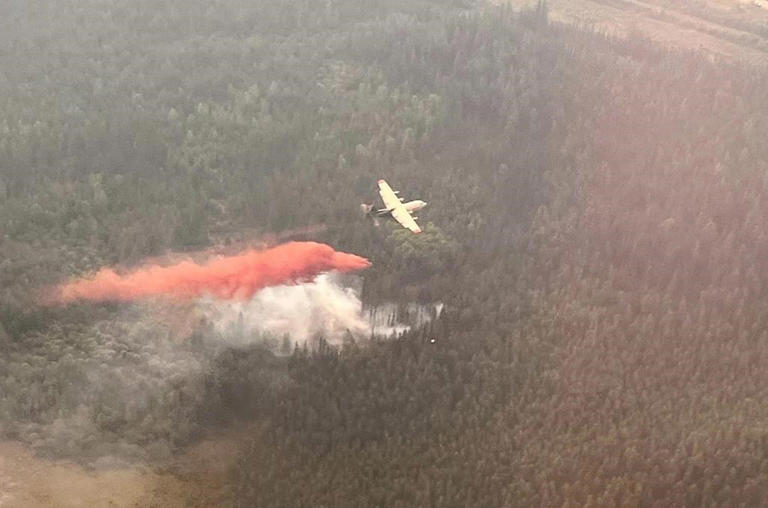Story by Sarah Komadina • Yesterday

Airtankers work on a wildfire near Edson, Alta., in a Friday, June 9, 2023, handout photo. A town in northwestern Alberta is being evacuated due to an out-of-control wildfire. An evacuation order has been issued for the town of Edson and parts of Yellowhead County. THE CANADIAN PRESS/HO-Government of Alberta Fire Service.© JFJ
Alberta hasn't been able to catch a break since wildfires burned through the province in May and June. Since then, there have been floods — some even in the same places affected by wildfires.
This year has also seen one of the strongest tornadoes in Alberta's history — it touched downtown between Didsbury and Carstairs Saturday.
The province is still adding up totals of all the natural disasters, but said so far this year wildfires alone have cost $700 million. Public safety minister Mike Ellis stressed the Alberta government is not focused on cost, but just getting through the season.
"We know that it's the worst alberta wildfire event in Alberta's history we are closing in on 1.5 million hectares burnt," Ellis said.
"We will do whatever it takes to keep Alberta safe."
The Insurance Bureau of Canada's Craig Stewart said natural disasters have been on the rise. He points to 15-years-ago when payouts averaged $400 million across the country. In the last five years, it's grown to five times that amount.
"Last year was $3 billion," he said. "We are going to be in that range again of $2 to 3 billion."
Stewart said these trends have led insurance premiums across the country to jump by 14 per cent — a hit that's been felt more in western provinces.
"Alberta and British Columbia are the two riskiest places in the country based on natural disasters that we've seen in recent years. So unfortunately premiums are going to go up more," Stewart said.
He added no single event makes premiums rise, rather, extreme weather events over time create trends and as it gets worseit will cost taxpayers, homeowners and governments more combined.
This is echoed by the Canadian Climate Institute's Dave Sawyer.
"In the long run taxes have to rise to cover the damages that government are backing. There are hits on productivity (in industry) so there are direct hits on households and there's these indirect impacts," Sawyer said.
He said the government can help by climate-proofing housing and working with homeowners to install equipment to help reduce floods and help with fire breaks in communities.
"There's income hits for people and then supply chain disruptions. Costs rise, inventories are hard to get, so it has this ripple impact through the economy," Stewart said.
Stewart said Alberta has been prone to natural disasters dating back to data bases from the 1970s. He said Alberta accounts for 50 per cent of insured losses associated with an extreme weather event like floods, hail storm and the like.
"Alberta gets the lion's share of economic damage in the country."
No comments:
Post a Comment